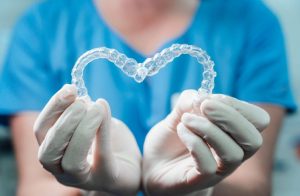Choosing a suitable filament for your 3D project is just as important as selecting a desktop 3D printer. With a wide variety of filaments present in the market (keeping aside the colors), choosing one can be a little problematic, especially for novices.
The filament you’ll use will impact the end result of your project. Not all filaments are suitable for building the item you have in mind.
What is a 3D printer filament?
3D printer filaments are thermoplastics. These are plastics that can be melted and reset an indefinite number of times. Thermoplastics melt when they are heated, and you can mold them before they completely cool down. In 3D printers, extruders melt 3D filament and extrude it via the metal nozzle.
For beginners, choosing between different filaments can be a bit daunting. Now that you understand the role of your 3D filament, let’s take a look at our top 4 picks
1. ABS 3D filament
ABS 3D filament is also called acrylonitrile butadiene styrene filament. This filament is one of the most widely used filaments because it is inexpensive and widely available. Some 3D printers can only use ABS filament for printing.
The name acrylonitrile butadiene styrene may seem very foreign to you, but this thermoplastic has wide applications. Legos are made with ABS.
Qualities of ABS
- Tough
- Durable
- Non-toxic
- Print temperature 210-250 degrees Celsius
- Unpleasant odor
2. PLA 3D filament
The polylactic acid filament is very similar to ABS because it is inexpensive and widely used. Typically, the desktop 3d printer that works with ABS can also work with PLA. They cost around $2O for one kg.
Because of its low cost, we recommend beginners to use it for practice. It is very dependable and can be used to do excellent projects.
Qualities of PLA
- Low melting point(180-230 degrees Celsius)
- Plant-based
- Biodegradable
- Low warping tendency
- Sweet odor
- Easy to print
3. Nylon 3D filament
Nylon is very versatile, and along with stockings and parachutes, it is also used to make 3D filaments. It is one of the cheapest 3D filaments to use with your desktop 3d printer. Nylon 3D filament requires high heat to melt, and thus, it cannot be used with all 3D printers.
There is a high chance that the object you are printing with this filament will warp. You can fix it with the help of a heated print bed.
Qualities of Nylon
- High melting temperature (240 degrees and above)
- Very strong
- Highly durable
- Flexible
- High warping tendency
4. PETG 3D filament
Glycol is added to PET to make it more suitable for 3D printing, thus the name PETG. PETG has impressive thermal properties. It has brilliant impact resistance, which makes it more durable than most 3D filaments.
It is perfect for layering because of its strong adhesion properties. The addition of glycol to PET makes it durable and less brittle.
Qualities of PETG
- Highly durable
- Great chemical resistance
- High impact resistance
- Low warping tendency
- Good thermal stability
Conclusion
Different 3D printing filaments have different properties and prices. After extensive research, we have selected a few for you so you can easily decide between them according to your personal needs. Take a look at your 3D printer’s manual because some 3D printers can only work with some specific filaments.




